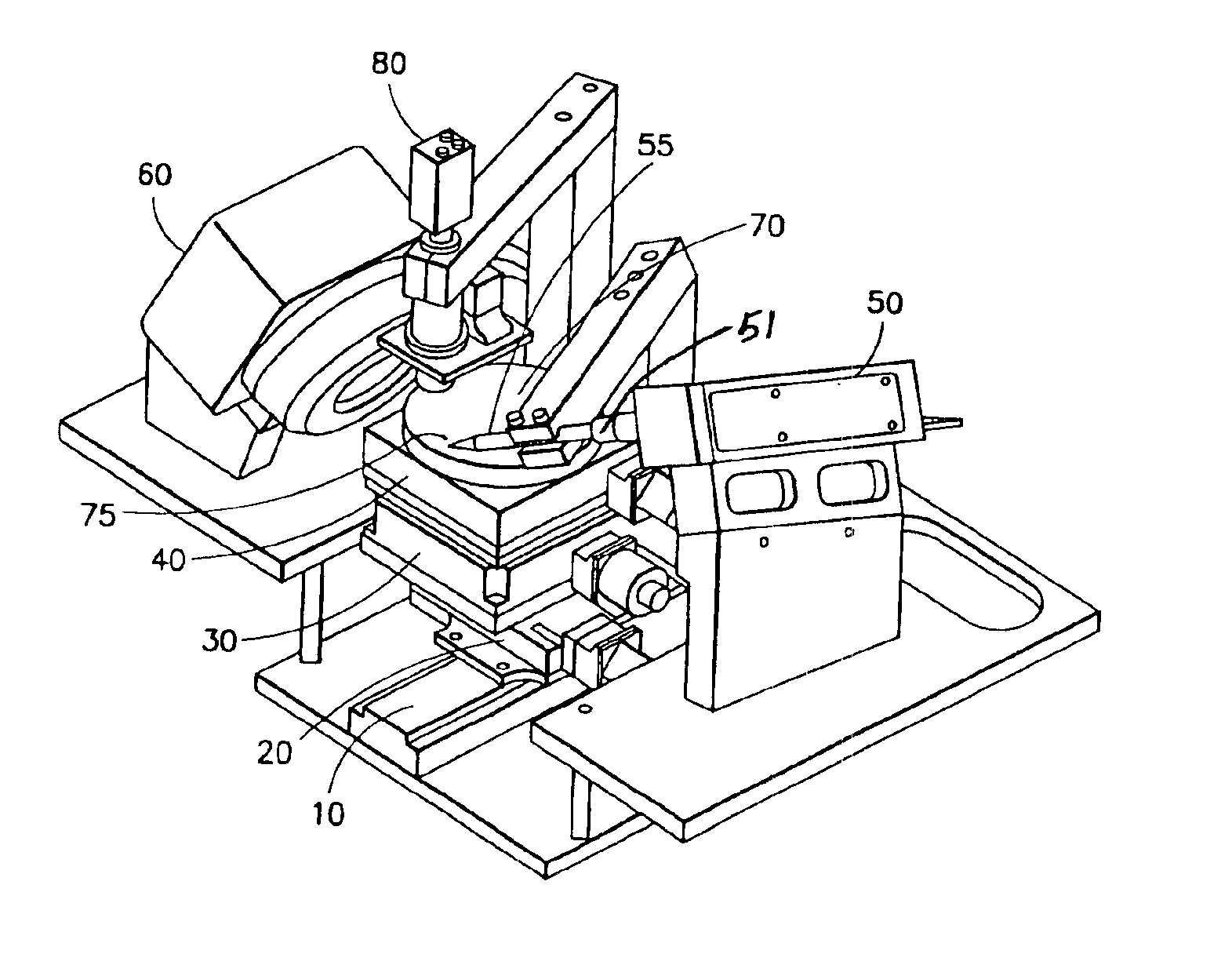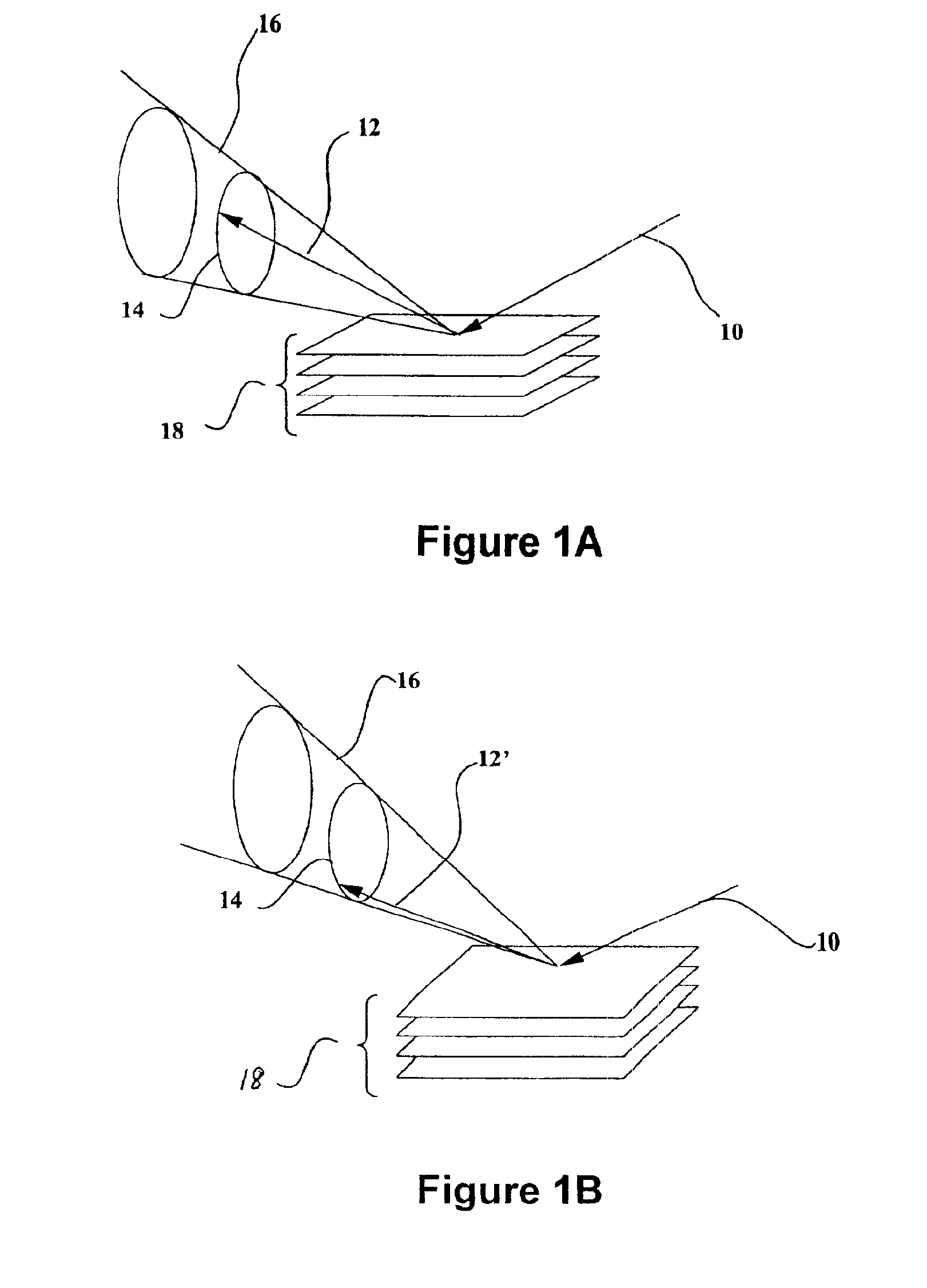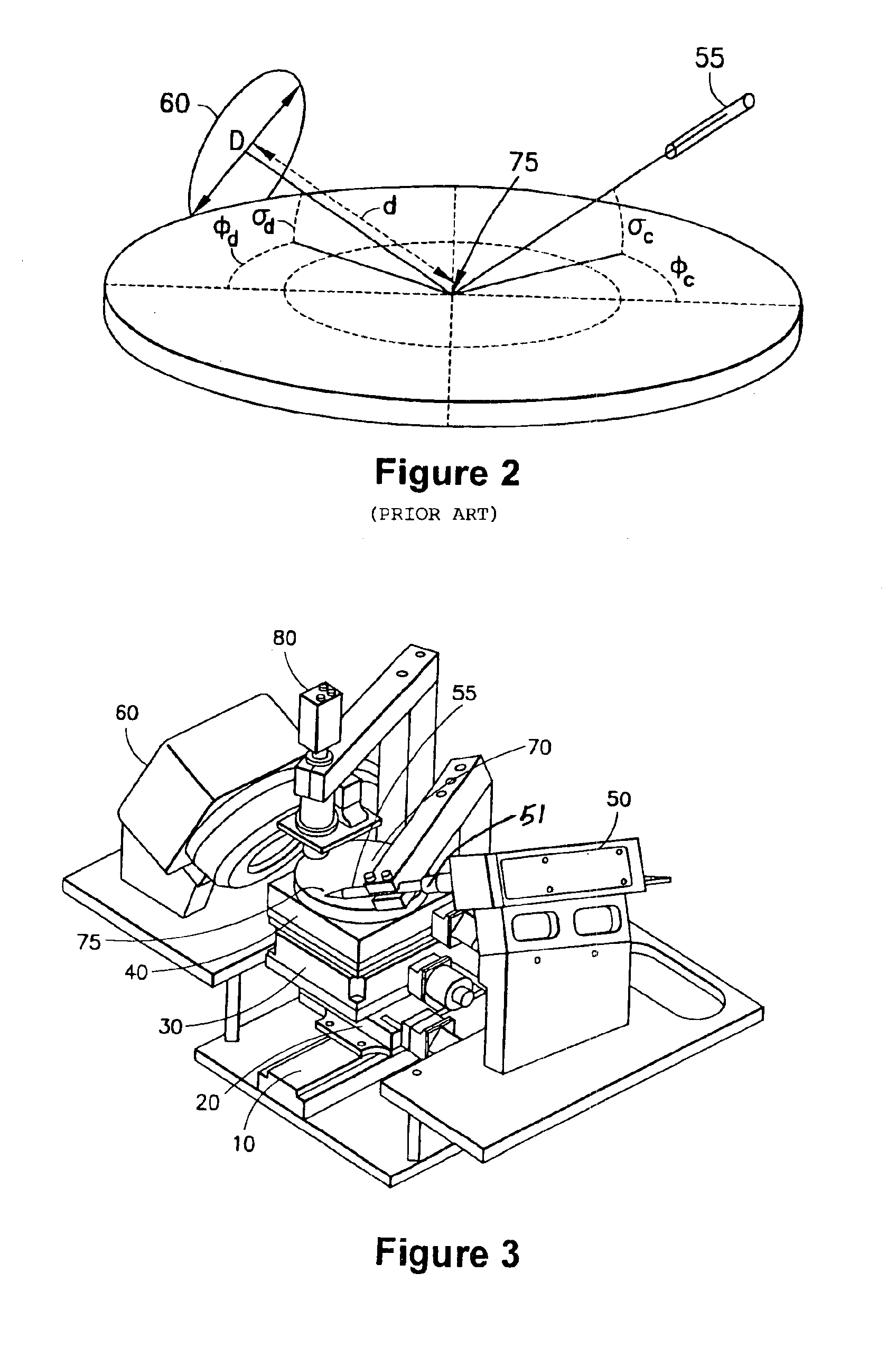Method and apparatus for rapid grain size analysis of polycrystalline materials
a polycrystalline material and grain size technology, applied in the field of crystallographic structure analysis, can solve the problems of resolution limits of the equipment currently available, the accuracy of the determination of grain size based thereupon, and the destructive effect of the protective layer over-coating the samples of polishing and etching processes
- Summary
- Abstract
- Description
- Claims
- Application Information
AI Technical Summary
Benefits of technology
Problems solved by technology
Method used
Image
Examples
Embodiment Construction
[0054]The present invention relates to an apparatus and method of measurement enabling rapid and accurate determination of average grain size and grain size distribution for polycrystalline materials with widely varying grain size, crystallographic texture, and residual stress.
[0055]Generally, when a monochromatic, nearly parallel x-ray beam interacts with a single crystal, x-rays will scatter in all directions. The scattered x-ray intensity in certain vector directions will be much higher due to constructive interference between the incident x-ray beam and specific crystallographic planes within the crystal. FIG. 9 shows a schematic representation of a section of a crystal, having its atoms arranged on a set of parallel planes A and B that are normal to the plane of the drawing and spaced a distance d apart. Assume that a beam of perfectly parallel, perfectly monochromatic x-rays (shown as rays 1 and 2) of wavelength λ is incident on this crystal at an angle θ, which is commonly re...
PUM
| Property | Measurement | Unit |
|---|---|---|
| grain size | aaaaa | aaaaa |
| grain sizes | aaaaa | aaaaa |
| grain sizes | aaaaa | aaaaa |
Abstract
Description
Claims
Application Information
 Login to View More
Login to View More - R&D
- Intellectual Property
- Life Sciences
- Materials
- Tech Scout
- Unparalleled Data Quality
- Higher Quality Content
- 60% Fewer Hallucinations
Browse by: Latest US Patents, China's latest patents, Technical Efficacy Thesaurus, Application Domain, Technology Topic, Popular Technical Reports.
© 2025 PatSnap. All rights reserved.Legal|Privacy policy|Modern Slavery Act Transparency Statement|Sitemap|About US| Contact US: help@patsnap.com



